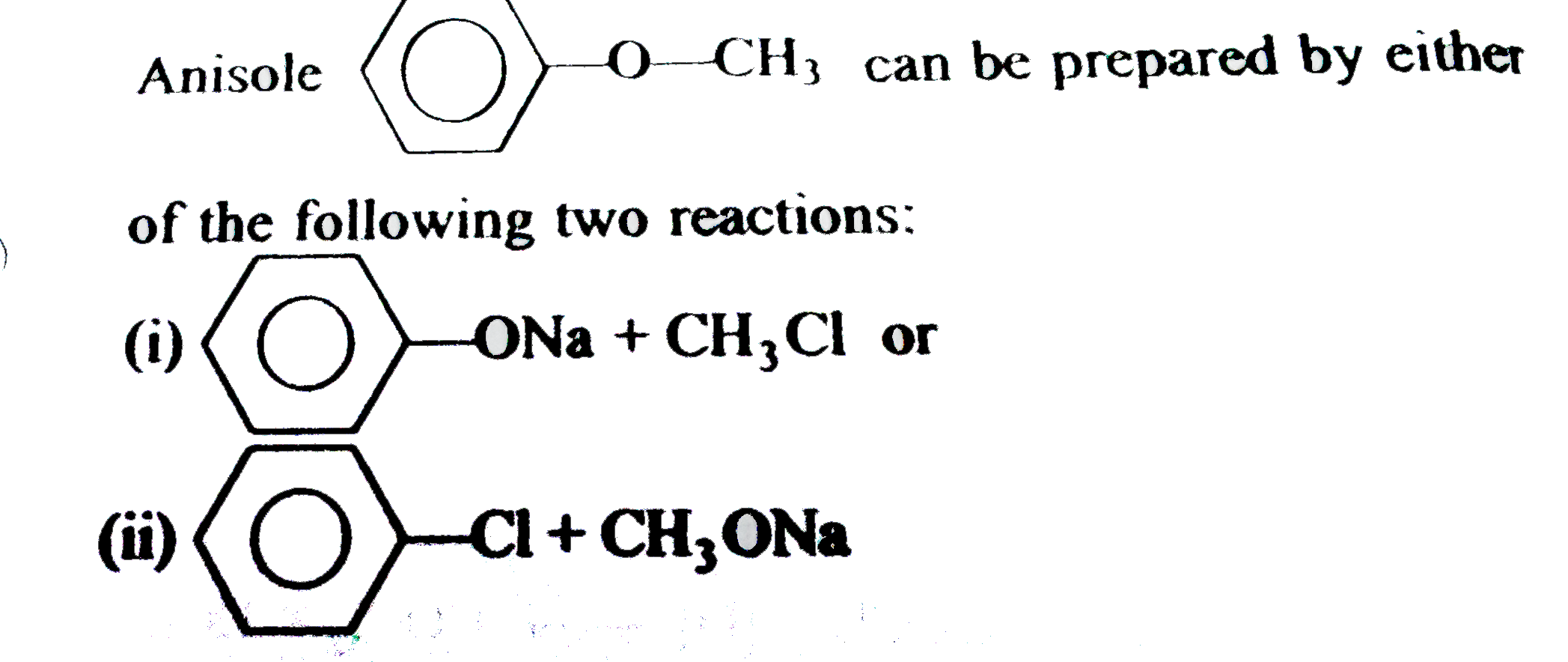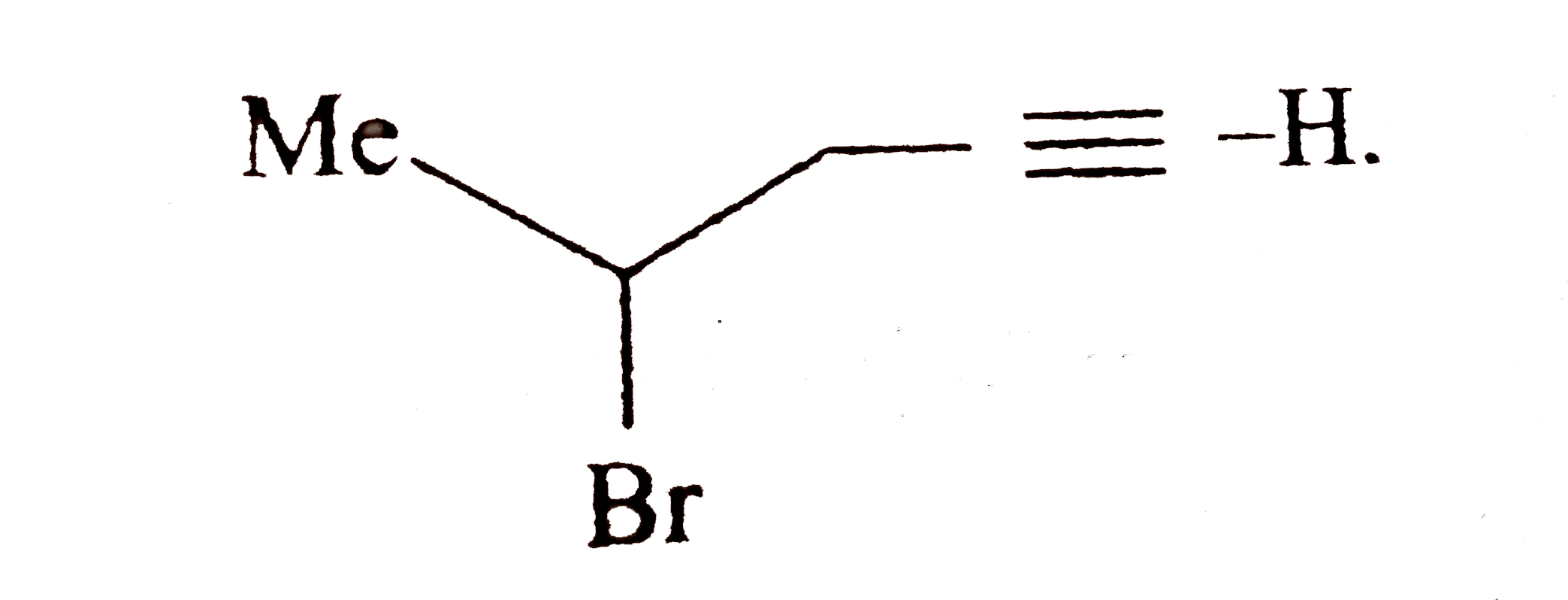Pure HI kept in a bottle axquires a brown colour after sometime. Why?
(b) Ferric ioddic is very unstable but ferric chloride is stable. Why?
(c ) KHF2 is well known but KHCl2 and KHBr2 do not exist. Why?
(a) HI is a strong reducing agent . It is oxidised by oxygen of the air, ie., aerial oxidised of HI occurs.
O2+4H⊕+4eӨ→2H2O[2IӨ→I2+2eӨ]×2¯¯¯¯¯¯¯¯¯¯¯¯¯¯¯¯¯¯¯¯¯¯¯¯¯¯¯¯¯¯¯¯¯¯¯¯¯¯¯¯¯¯¯¯¯¯¯¯¯¯¯¯¯O2+4H⊕+4I→2H2O+2I2–––––––––––––––––––––––––––––––––––
The iodine liberated gives a brown colour to the solution.
(b) Iodide ion is a strong reducing agent and reduces ferric ions into ferrous ions, hence ferric iodide is unstable. On the other hand, chloride ion is a weak reducing agent and does not reduce ferric to ferrous ion and thus ferric chloride is stable.
(c ) Hydrofluoric acid exists as dimeric as dimeric molecule (H2F2) due to hydrogen bonding . HF thus exhibits dibasic nature and forms two series of salts, KHF2 (as K⊕ and FӨ....H−F) and KF(K⊕andFӨ) .HClandHBr exist as monomeric molecules as hydrogen bonding is not present.
Topper's Solved these Questions
- BOOK - CENGAGE CHEMISTRYCHAPTER - P-BLOCK GROUP 17 ELEMENTS - THE HALOGEN FAMILYEXERCISE - Solved Example7videos
P-BLOCK GROUP 17 ELEMENTS - THE HALOGEN FAMILY
- BOOK - CENGAGE CHEMISTRYCHAPTER - P-BLOCK GROUP 17 ELEMENTS - THE HALOGEN FAMILYEXERCISE - Exs 4.1 (Subjective)16videos
P-BLOCK GROUP 17 ELEMENTS - THE HALOGEN FAMILY
- BOOK - CENGAGE CHEMISTRYCHAPTER - P-BLOCK GROUP 16 ELEMENTS - THE OXYGEN FAMILYEXERCISE - Archives Subjective10videos
P-BLOCK GROUP 16 ELEMENTS - THE OXYGEN FAMILY
- BOOK - CENGAGE CHEMISTRYCHAPTER - P-BLOCK GROUP 18 ELEMENTS - THE INERT GASESEXERCISE - Ex 5.1 (Objective)14videos
P-BLOCK GROUP 18 ELEMENTS - THE INERT GASES
Similar Questions
KHF2 is a well known compound whereas KHCl2 does not exist. Why ?
View SolutionWhy KHF2 exist but KHCl2 and KHBr2 does not?
View SolutionKHF2 exists while KHCl2 does not. Explain.
View SolutionExplain the following
(i) A little acid is always added in the preparation of aqeous ferrous sulphate solution
(ii) Aqueous solution of mercuric chloride and stannous chloride cannot exist together .
(ii) Ferric iodide is very unstable but ferric chloride is not.
(iv) Hg2+andHg2+2 salts are colourless generaly .View SolutionExplain the following with proper reason :
(i)Fluorine cannot be prepared from fluorides by chemical oxidation.
(ii)Anhydrous HCl is a bad conductor of electricity while aqueous HCl is a good conductor.
(iii)Halogens are strong oxidising agents.
(iv)Bleaching of flowers by chlorine is permanent while after bleaching with SO2, the colour returns.
(v)Iodine dissolves more in KI solution than in water.
(vi)KHF2 is well known whereas KHCI2 or KHBr2 does not exist.
(vii)Ferric iodide is very unstable but ferric chloride is stable.
(viii)Fluorine does not form F−3 (polyhalide) ion.
(ix)HF is not stored in glass bottles but kept in wax lined bottles.
(x)HF has a greater electronegativity difference and more ionic character than HCl, HBr and Hl but it is the weakest acid.View Solution(a) Write the balanced chemical equation for the reaction of Cl2 with hot and concentrated NaOH. Is this reaction a disproportion reaction?
(b) When HCl reacts with finely powdered iron, it forms ferrous chloride and not ferric chloride. Why?
Deduce the molecular shape of BrF3 on the basis of VSEPR theory.View SolutionExplain the following :
(a) Carbon tetrachloride is used as fire extinguisher.
(b) Use of chloroform as anaesthetic is decreasing.
(C) Chloroform is kept with a little ethyl alcohol in a dark brown coloured bottle.
(d) Iodoform gives precipitate with AgNO3 on heating while chloroform does not.
(E) Alkyl iodides become darken on standing in presence of light.
(f) A small amount of Nal or KI catalyses the hydrolysis of R-CI or the reaction,
R−CI+R'ONa→R−O−R'+NaCI
(g) while preparing alkyl halides from alkanes ,dry gaseous hydrohalgen acids are used instead of their aqueous solutions.
(h) Hydrogen atom of chloroform is definitely acidic in nature.
(i) Vinyl halide is less reactive while allyl halide is more reactive than alkyl halides. or
Vinyl chloride does not gives SN reaction but allyl chloride gives.
(j) Why is free radical halogenation of alkanes is seldom used for laboratory preparation of alkyl halides ? Under what condition good yields of monosubstituted chloride can be obtained ?
(K) What effect should the following resonance of vinyl chloride have on its dipole moment?
H2C−δ+CH−δ−CI⇔H2δ−C−CH=δ+CI
(I) 2-Chloro-3-methylbutane on treatment with alcoholic potash gives2- methylbut-2-ene as the major product.
(m) Compare the rates of (i) SN1and(iii)SN2 reactions of allyl chloride and n-propyl chloride.
(N) When CH3CH=CHCH2CI reacts with alcoholic potassium cyanide, a mixture of isomeric product is obtained.
(O) the formation of the products giving the structures of the intermediates.

(q) Arrange C6H5CH2CH2CI, C6H5CHCICH3 and C6H5CH=CHCI in the order of their decreasing activities with alcoholic silver nitrate.
(r) Arrange CH3CH2Br,C6H5 and C6H5CH2Br in order of their decreasing activities with KCN.
(s) Chlorobenzene is less reactive as compared to ethyl chloride.View SolutionWhich of the following statements (s) is (are) correct with reference to the ferrous and ferric ions?
(a). Fe3+ gives brown colour with potassium ferricyanide.
(b). Fe2+ gives blue precipitate with potassium ferricyanide.
(c). Fe2+ gives red colour with potassium thiocyanate.
(d). Fe2+ gives brown colour with ammonium thiocyanate.View SolutionGiven reasons:
(i) During the test of nitrogen in Lassaigne's filtrate, sometimes red colouration is obtained when ferric chloride is added.
(ii) Why is sodium extract made acidic with acetic acid before the addition of lead acetate in the test of sulphur?
(iii) In the test of nitrogen, freshly prepared solution of ferrous sulphate is always used.
(iv) During the test for halogens, why is sodium extract first boiled with a few drops of conc. HNO3?
(v) Why the organic compound is fused with sodium metal during detection of nitrogen, sulphur, halogens, etc.?
(vi) What is the role of copper sulphate and potassium sulphate in Kjeldahl's process for the estimation of nitrogen in an organic compound?
(vii) Is Beilstein test a satisfactory test for detection of halogens?
(viii) Why CCI4 will not give white precipitate of AgCI on heating with AgNO3?View SolutionExplain the following observation :
a. When pent −1 en −4− yneistrested with HBr in molar proportion, the addition takes place on the double bond and not on the triple bond, thereby, yielding the porduct ,

b. The (C=−C) bond length in propene is shorter than expected.
c. Whey benzyl carbocation is more stable than ethyl carbocation ?
d. Why does but −2− ene exhibit cis − trans isomerism but but −2− yne does not ?
e. CI2C=CCI2 does not add CI2 under usual conditions but adds in the presence of AICI3.View Solution

